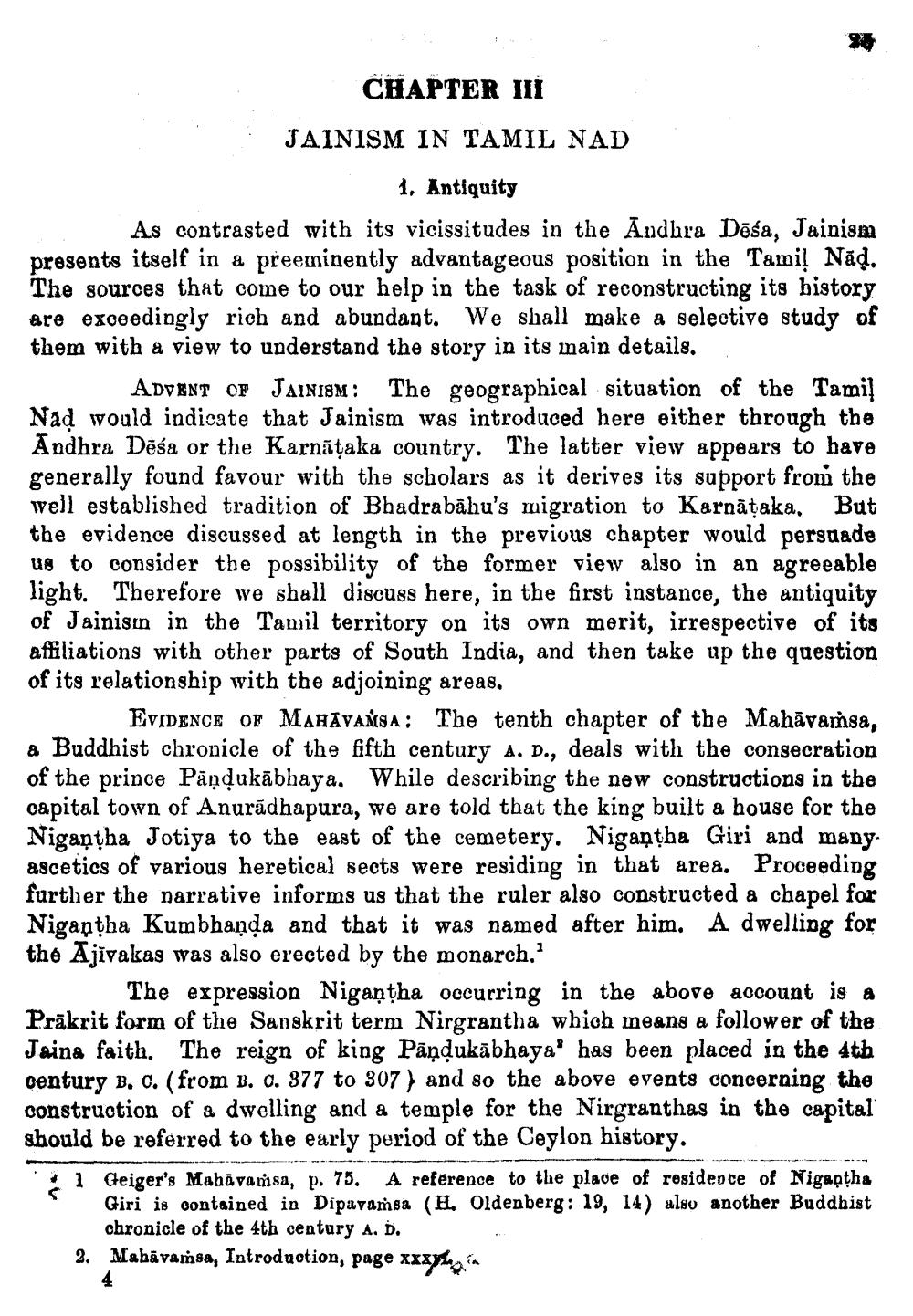________________
CHAPTER III JAINISM IN TAMIL NAD
1. Antiquity As contrasted with its vicissitudes in the Andhra Dāśa, Jainism presents itself in a preeminently advantageous position in the Tamil Nad. The sources that come to our help in the task of reconstructing its bistory are exceedingly rich and abundant. We shall make a selective study of them with a view to understand the story in its main details.
ADVENT OF JAINISM: The geographical situation of the Tamil Nad would indicate that Jainism was introduced here either through the Andhra Dēša or the Karnataka country. The latter view appears to have generally found favour with the scholars as it derives its support from the well established tradition of Bhadrabāhu's migration to Karnātaka. But the evidence discussed at length in the previous chapter would persuade us to consider the possibility of the former view also in an agreeable light. Therefore we shall discuss here, in the first instance, the antiquity of Jainisin in the Tamil territory on its own merit, irrespective of its affiliations with other parts of South India, and then take up the question of its relationship with the adjoining areas.
Evidence OF MAHAVAŃSA: The tenth chapter of the Mahāvamsa, a Buddhist chronicle of the fifth century A. D., deals with the consecration of the prince Pāņdukābhaya. While describing the new constructions in the capital town of Anurādhapura, we are told that the king built a house for the Nigantha Jotiya to the east of the cemetery. Nigantha Giri and many. ascetics of various heretical sects were residing in that area. Proceeding further the narrative informs us that the ruler also constructed a chapel for Nigantha Kumbhanda and that it was named after him. A dwelling for the Ājivakas was also erected by the monarch,
The expression Nigaņķha occurring in the above account is a Prākrit form of the Sanskrit term Nirgrantha which means a follower of the Jaina faith. The reign of king Pāņdukābhaya' has been placed in the 4th century B. C. (from B. C. 377 to 307) and so the above events concerning the construction of a dwelling and a temple for the Nirgranthas in the capital should be referred to the early period of the Ceylon history.
1 Geiger's Mahāvansa, p. 75. A reference to the place of residence of Nigantha
Giri is contained in Dipavamsa (H, Oldenberg: 19, 14) also another Buddhist
chronicle of the 4th century A. D. 2. Mabāvamsa, Introduotion, page xxxyhaia
4




